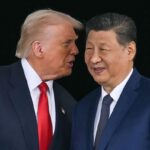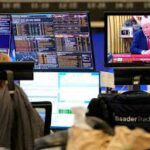In a closely watched summit, US President Donald Trump and Chinese President Xi Jinping reached a limited but market-moving agreement to ease trade tensions between the world’s two largest economies, lowering key tariffs, unlocking rare earth exports, and setting the stage for broader cooperation.
More about: Trump cuts tariffs on China after meeting Xi in South Korea
Tariff Cuts: Fentanyl Tariffs Halved
The headline announcement: The U.S. will immediately cut its 20% fentanyl-related tariffs on Chinese goods in half, bringing them down to 10%. Trump said this is part of a broader reset in the U.S.-China trade relationship and a reward for what he called China’s “very strong action” in combating fentanyl exports.
Overall, U.S. tariffs on Chinese goods — which averaged 57.6% prior to the meeting — will fall to around 47%, according to the Peterson Institute for International Economics. That marks the first significant tariff rollback since Trump’s return to office.
Rare Earths Flow Again (For Now)
A critical part of the deal is China’s agreement to ease restrictions on rare earth mineral exports for at least one year. With China controlling up to 90% of the world’s rare earth processing, the move offers relief to tech, EV, and defense industries that have been caught in the middle of trade tensions.
“They’re going to keep those flowing,” said U.S. Trade Representative Jamieson Greer.
Soybeans Back on the Menu
After months of halted agricultural purchases, China has resumed buying multiple shipments of U.S. soybeans, according to Agriculture Secretary Brooke Rollins. This marks a key win for American farmers after what some described as a “Farmageddon” period earlier this year.
Trump hinted that energy deals might follow, teasing a potential “very large scale” transaction involving oil and gas from Alaska.
The Xi-Trump Show
The face-to-face meeting in Busan lasted just under two hours — the first of Trump’s second term. Trump called it a “12 out of 10” and declared “we have a deal,” although he clarified that the formal agreement is still being finalised and “will be signed pretty soon.”
Trump is set to visit China in April 2026, while Xi will visit the U.S. thereafter.
AI, Chips, and… No Talk on Taiwan
Notably not part of the agreement were semiconductors or TikTok. Trump said China and Nvidia ($NVDA) will begin direct discussions but warned that access to advanced “Blackwell” chips was unlikely in the short term.
TikTok’s U.S. business spinoff remains unresolved.
Trump also confirmed that Taiwan was never discussed, and that China’s stance on Russia and Ukraine remains unchanged, despite both sides agreeing to “work together” on global security issues.
What It Means for Markets and Investors
Markets welcomed the developments, with stocks and commodities lifting modestly after the news broke. While not a comprehensive deal, this de-escalation removes short-term trade risks, especially the threat of a 100% blanket tariff on Chinese imports that Trump previously floated.
Capital Economics noted the agreement “removes a key downside risk to the near-term outlook,” but warned that underlying tensions remain and both nations will likely continue pushing for strategic decoupling.
Oxford Economics high risks of future policy missteps.
What’s Next?
- A formal trade agreement is expected within days, pending legal and bureaucratic coordination.
- China and Nvidia are set to begin talks on AI chip access and restrictions.
- Rare earth exports will be monitored closely, as the current deal is only for one year.
- Watch for energy deals, potential TikTok resolution, and broader U.S.-China coordination ahead of Xi’s planned U.S. visit.
This limited trade agreement signals a thaw in U.S.-China tensions and offers near-term market relief. Tariff cuts, resumed agricultural trade, and rare earth exports provide tangible economic boosts — but the deeper rivalry remains. Whether this becomes a stepping stone to a broader deal or just a temporary truce will depend on execution and the political winds heading into 2026.
Disclosure: This article does not represent investment advice. The content and materials featured on this page are for educational purposes only.










